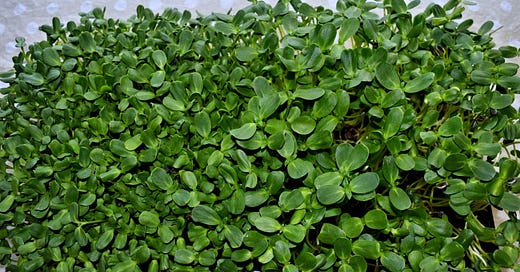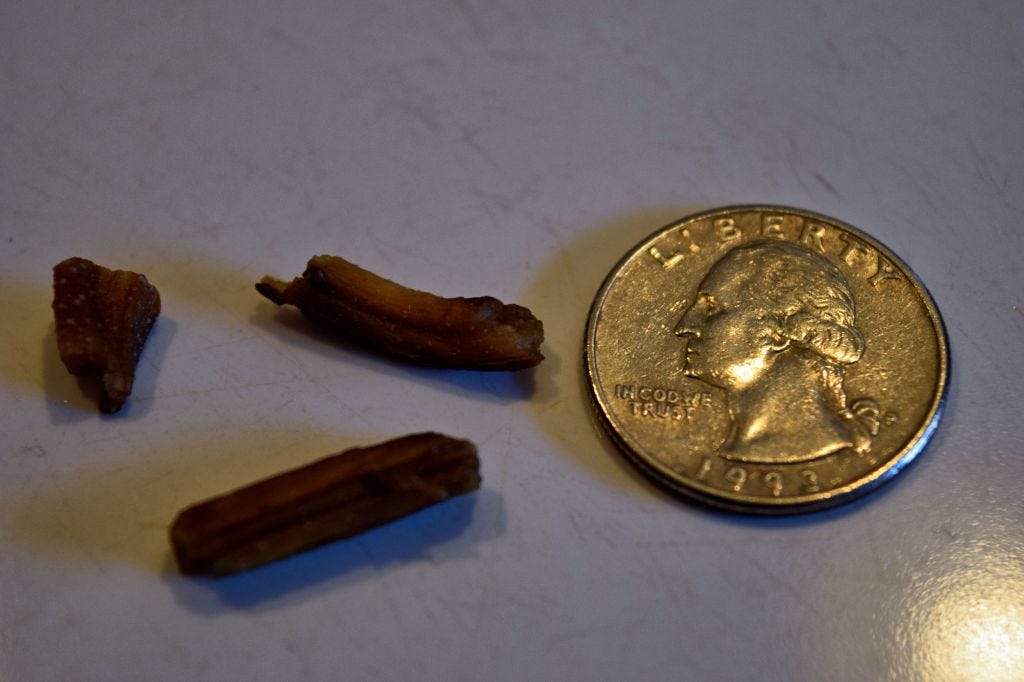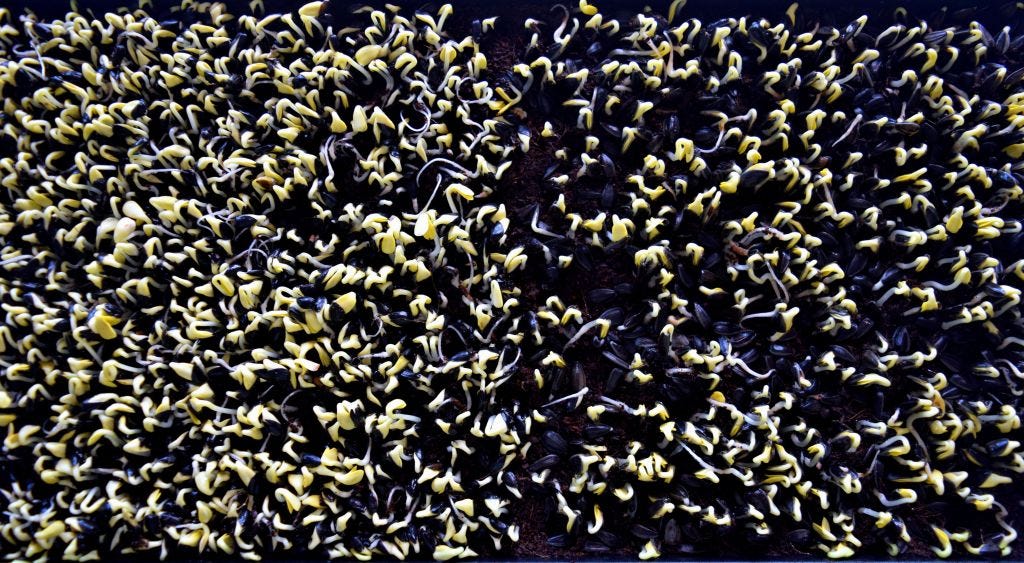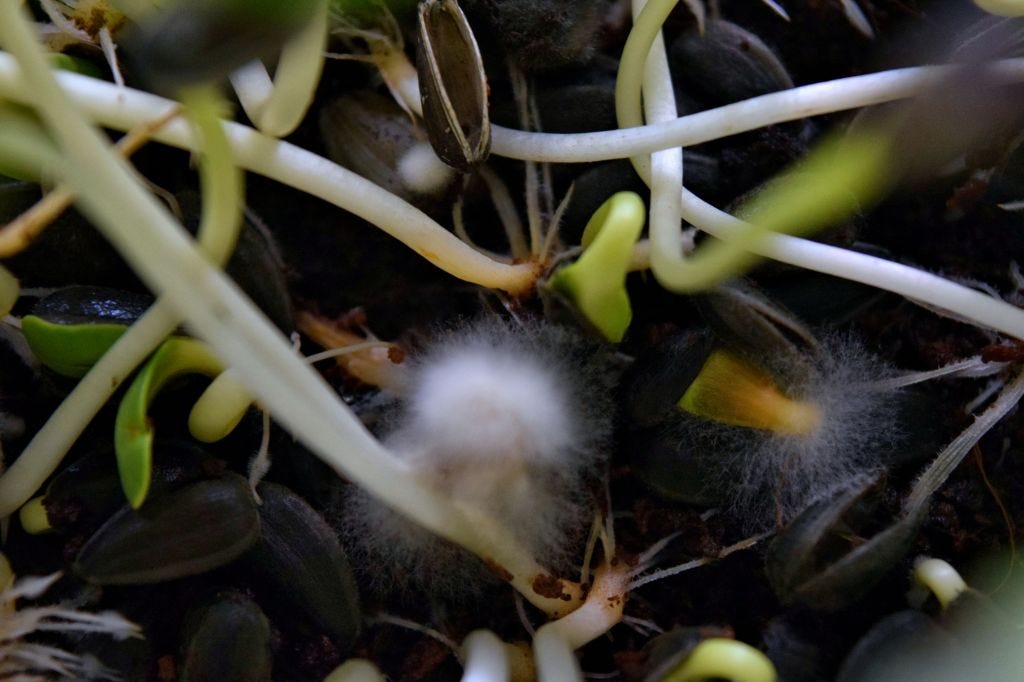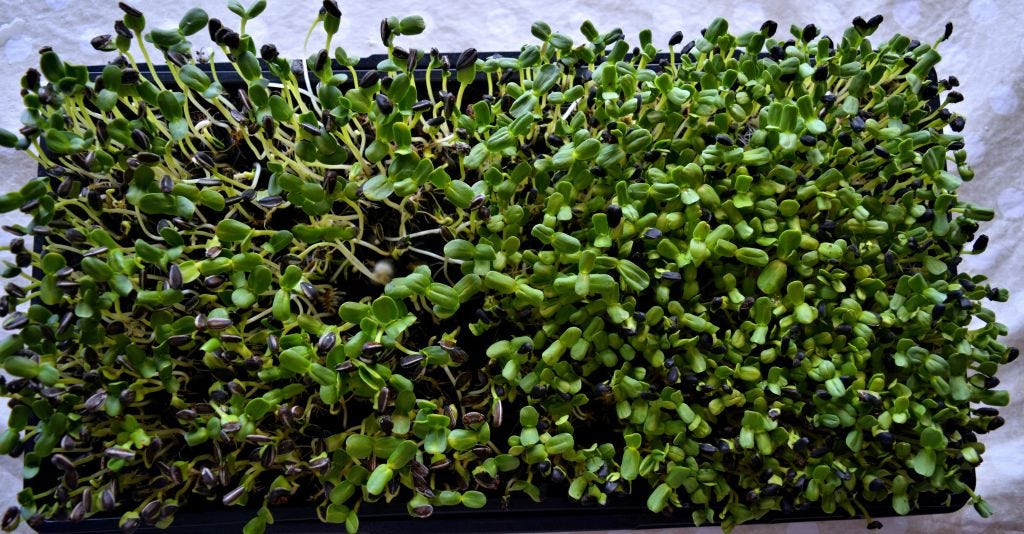What happens if your seed supplier is out of stock of your favorite variety of sunflowers? Try another variety? Wait. What would you do? I felt adventurous one day when placing an order with True Leaf only to learn they were out of stock on their Black Oil Sunflower seeds due to the Covid-19 situation. According to their website the back order of seeds from Italy were due to the virus. Italy was hit hard and their processing and shipping seeds was suspended due to illness. Then there was something mentioned about holding the shipment in customs or something along those lines. Okay, so should I wait? They had some organic sunflowers with stripes on the shell that I thought, why not? They’re organic…I’ll give it a shot.
Live and learn they say. Well, I did and I’m trying to give my fellow sprouters and microgreeners a “head’s up” regarding the lessons I learned….the hard way. So what I’m about to tell you shouldn’t make you run away from growing your own sunflowers, but rather, I’d like you to have the knowledge to avoid the same mistakes I ran into. Here goes.
The Experiment
Compare the growing habits of Black Oil Seed Sunflower (Country Creek Acres bought off of Amazon) and the Organic Sunflower Seed (purchased online through True Leaf Market) and determine if one variety was superior to the other. So I sowed half of a flat with one variety and the other half of the flat with the other. I placed a piece of duct tape on the end with the striped sunflower seeds, so there wouldn’t be any confusion as the plants grew and it became hard to tell the characteristics of the seeds enough to tell them apart.
Procedure
I normally seed sunflowers in a 1020 tray with 125 grams of sunflower seeds, so I did 62 grams for each side. Close enough for government work. I measured out the seeds in separate bowls and soaked them overnight (12 hours). I drained them and prepared to plant.
I wouldn’t be to surprised to find a piece of stem, once in a while, in a package of sunflower seeds, but three stem pieces? What am I paying for? Once the striped seeds were soaked and I was rinsing them off one last time I noticed these three stem pieces in the batch of 62 grams of seeds that I had soaked.
Advertisement
I planted these seeds in a 1020 tray with coconut coir as the growing medium. I applied weight on the seeds for the first three days and then put the seeds into blackout for another day. By day two I was concerned about the lack of germination on the striped seed side of the tray. If they all looked like this I would have kept them in blackout another day. The Black Oil Sunflowers looked ready to go into the lights. They were densely packed and it’s the time of year that mold can be a problem so I thought it best to get them out of blackout and under the lights.
I was really surprised at how differently the germination rates were between the two. The striped seed germination was about half of the Black Oil side. If seeds don’t germinate then they start to decay. In nature, the decay is accomplished by the fungi or mold that grows in order to break down the material into compost.
I was vigilant about using 3% food grade hydrogen peroxide mixed at the rate of two caps full of H2O2 to one liter of water in my spray bottle. I always “treat” my sunny’s with the hydrogen peroxide, each time I water, due to their high propensity to grow mold. I think a lot has to do with the top misting of the plants, in an attempt to soften the seed coats so they drop off, as the plant grows.
The Results
Low and behold today I discovered two white fuzzy growths at the base of some of the striped sunflower plants. So I performed “surgery” and extracted the mold growth, the growth medium and the plant and it’s roots from the tray. I used a pair of blunt tipped tweezers for the job. I sprayed the area generously with the hydrogen peroxide, remember this is 3% food grade AND diluted in water.
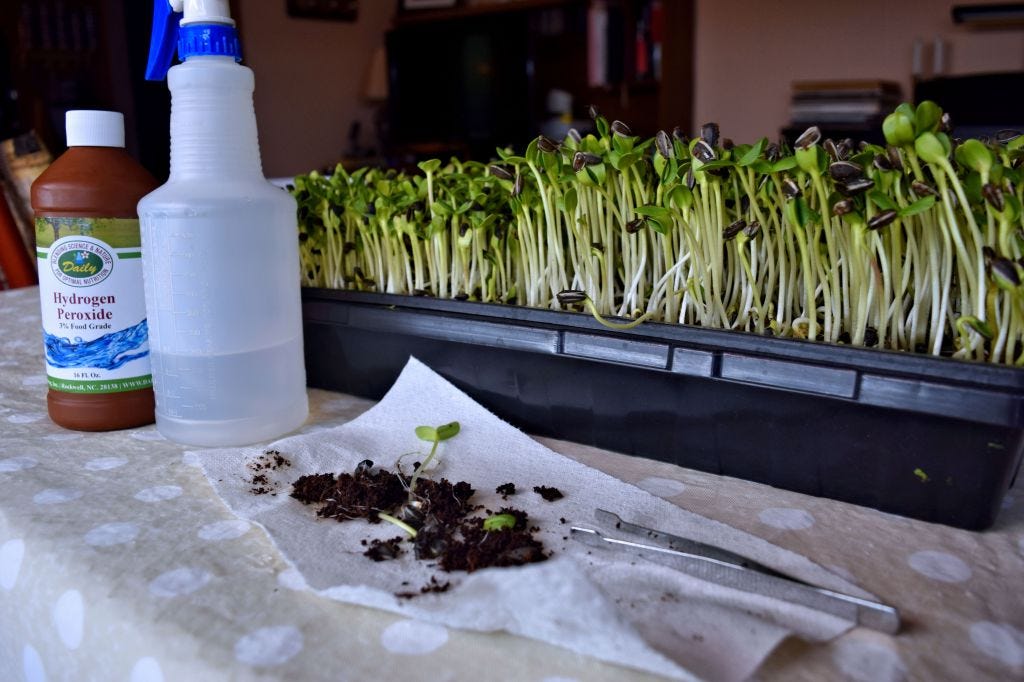
By the way, it’s Day 6 and we have a few more days to go before harvest. The difference between the two varieties are becoming more apparent every day. Look at the difference between the two. Enough of a difference that I’ve already marked the bag of striped sunflowers with a “Not Worth It” note to myself. I don’t want to make the mistake of growing this again.
I just went to the True Leaf Market website to link to the striped sunflower seeds I ordered and see their comments on this seed. They were told it was “Black Oil” by the supplier but the seeds have stripes and True Leaf noticed that and the inferior seed product. They were trying use it to try and fill the gaps until their Italian supplier was able to restock them again. These “substitute seeds” aren’t up to The True Leaf standards either.
I think I’ll share my post with them so they can see the difference too. I’m sure they have already received some complaints about the seeds. I don’t recall their message about the inferior quality of these seeds being on their website when I purchased the seeds or I don’t think I would have been as adventurous as I was.
I harvested the sunflowers a day later than normal. Ran out of time and energy. I noticed there were a number of true leaves already showing on the striped organic sunflower seed side. The black oil sunflowers there were a couple but not as many nor as big as the other seeds.
Conclusion
Not all seeds are created equal. The problems aren’t always in your growing habits and/or techniques. Don’t beat yourself up for a failed crop or less than stellar successes. Shit happens. This time it was a poorer seed quality, a different variety that doesn’t perform as well for microgreens and not due necessarily to my growing conditions or techniques. I think I’d only grow these seeds if I were starving in the midst of a pandemic…don’t go there.
My message to you. Don’t give up your sunny’s due to a seed that is anything but sunny. Live and learn. Don’t be afraid to fail. It’s not always your fault. Keep on growing, you’ll be glad you did.

